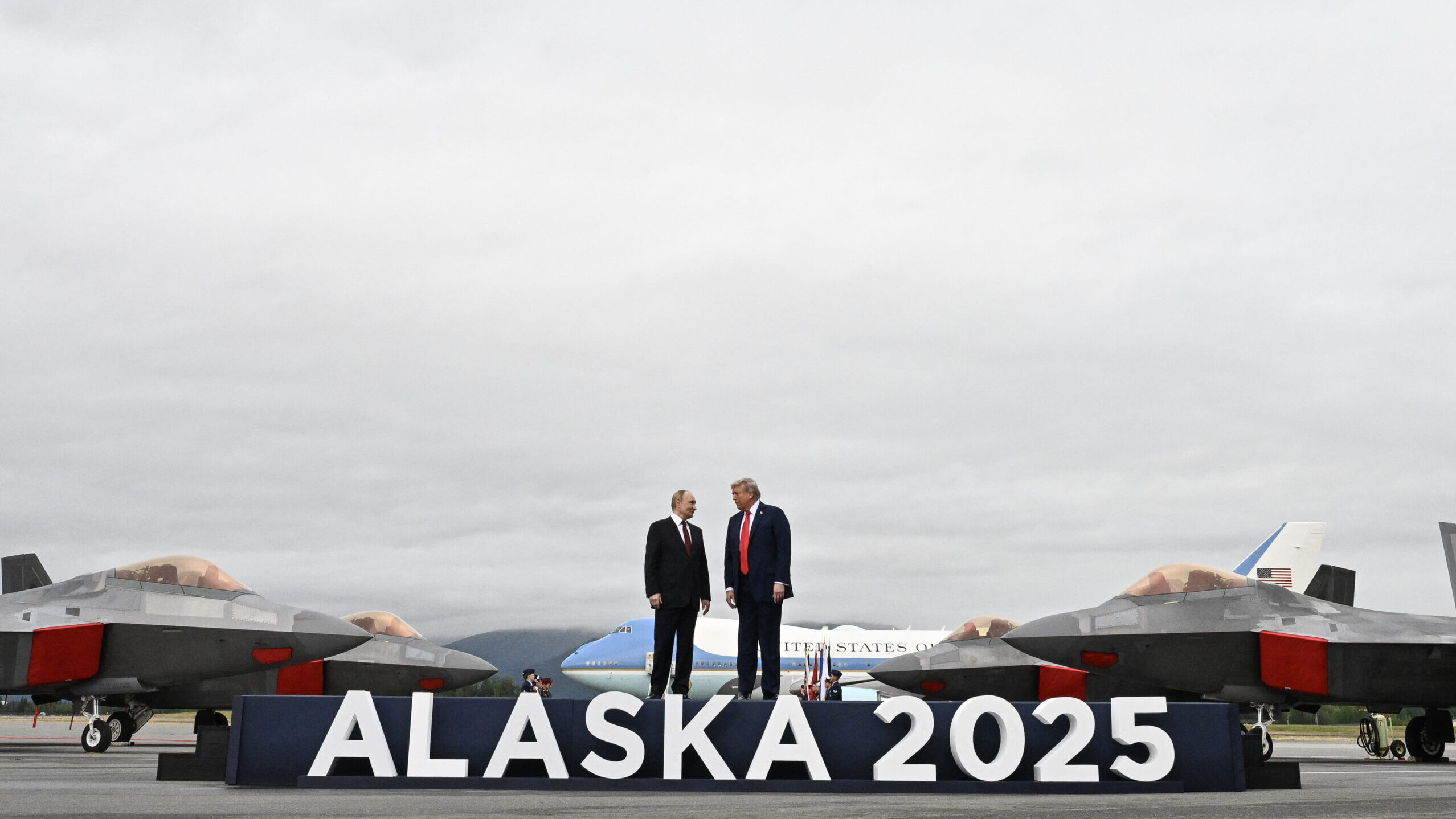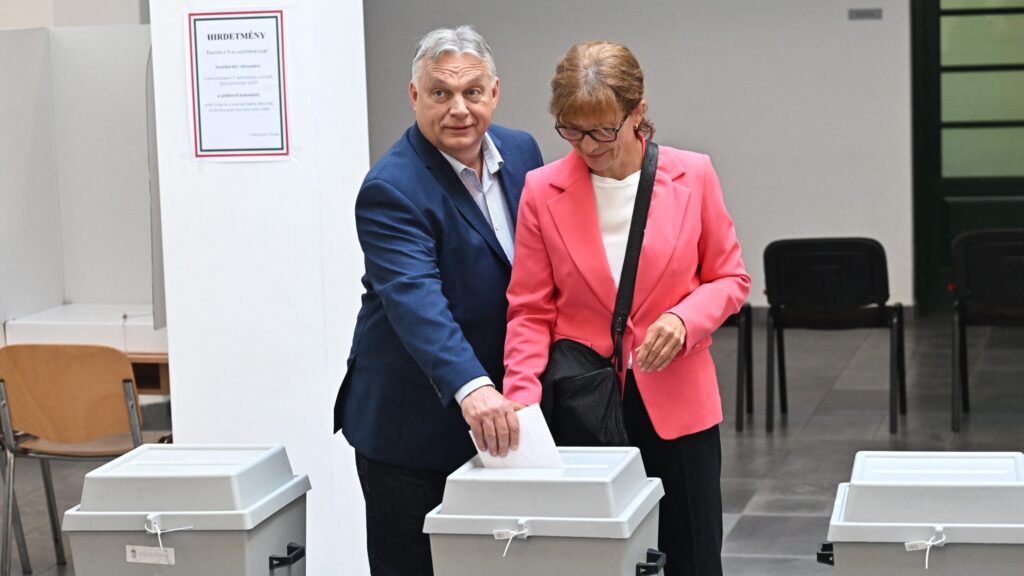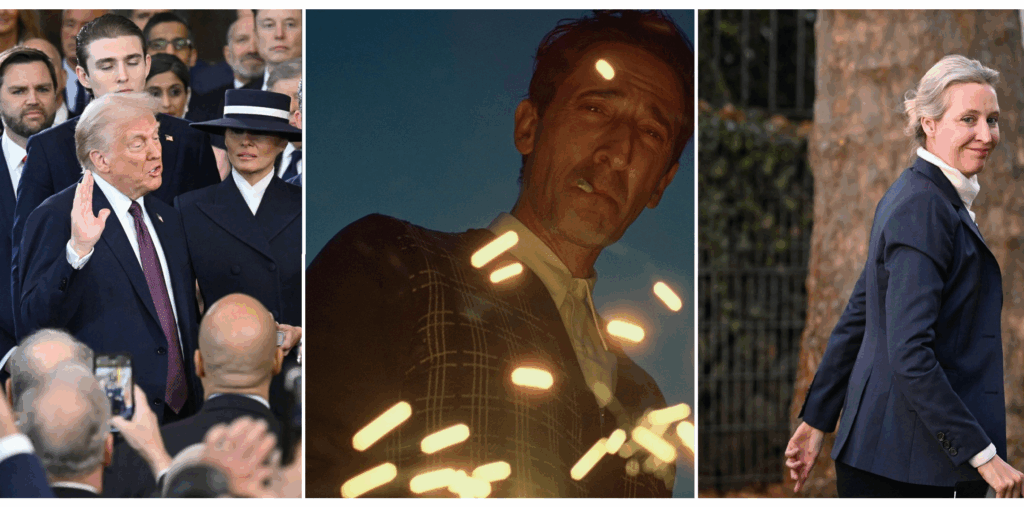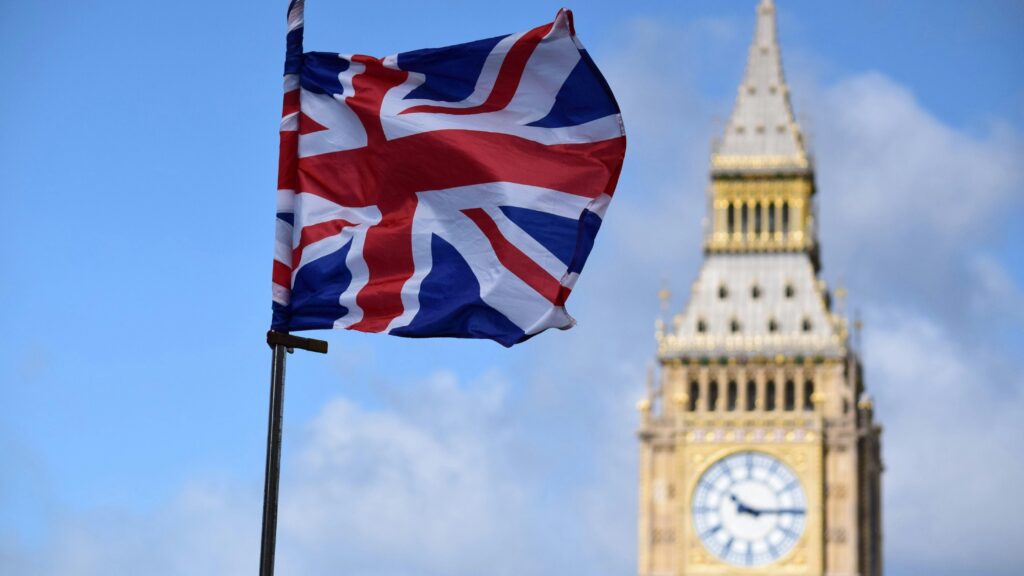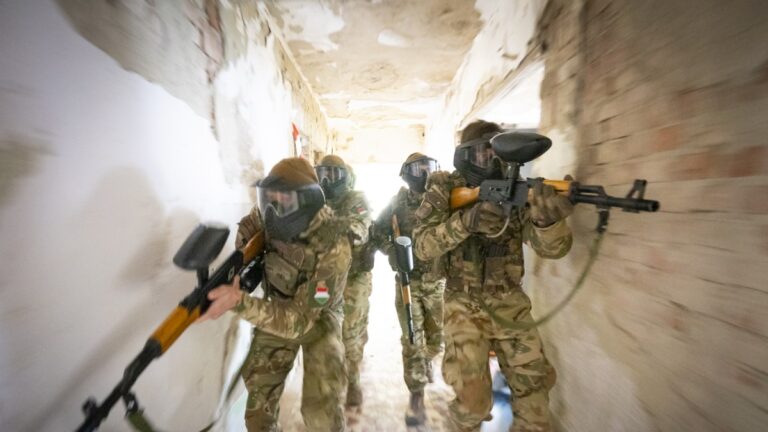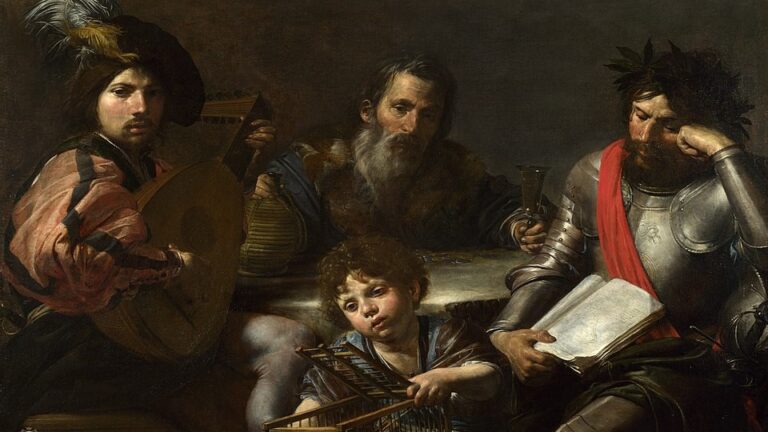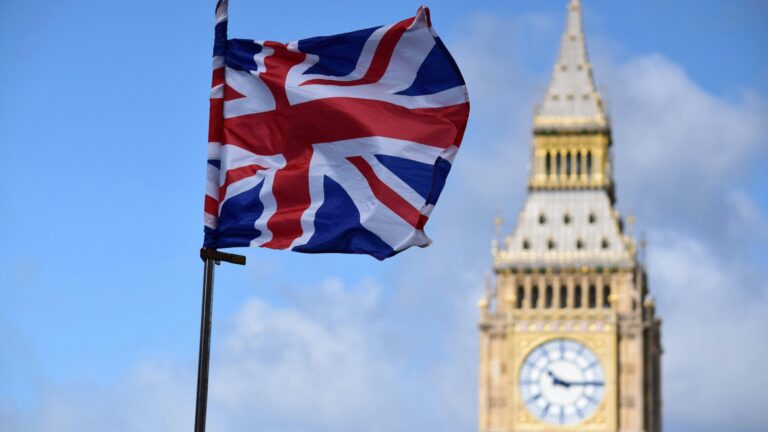‘Good evening, America—good evening, free world! Tonight, from the icy frontier of Anchorage, Alaska, history marches before our eyes. The hour is heavy, the stage is set. First to arrive—President Donald J Trump, stepping onto Alaskan soil with the confidence of a nation behind him. The crowd holds its breath. And then—the engines roar. From the East, slicing through the northern skies, comes the plane of President Vladimir Putin. Steel meets steel, power meets power. American soldiers, crisp in uniform, roll out the red carpet. At its very heart, the two leaders clasp hands—firm, deliberate—exchanging words few will ever hear. Then—ladies and gentlemen!—the ground trembles as a B–2 stealth bomber, flanked by the silent guardians of the sky, the F–22 Raptors, thunder overhead. A reminder—America’s might is not only present, it is supreme. Trump, with a sweep of his hand, guides Putin toward the podium, and soon, the two men step into The Beast—the steel fortress on wheels, the very symbol of American power. The motorcade surges forward, shadowed by the wings of US air dominance, carrying these titans to the table where words may decide the fate of nations. Stay tuned, ladies and gentlemen—this is no ordinary meeting. This is Alaska, and history is on the air tonight!’
The above quote is how a radio presenter from the Cold War era would most likely have described the theatrical and precisely choreographed entrance of US President Donald Trump and Russian President Vladimir Putin on Friday in Anchorage, Alaska. The meeting, organized hastily over the course of one week, was indeed one of the most grandiose of recent decades in terms of symbolism, choreography, and impact. The grand entrance, military pageantry, and visual dominance conveyed a staged narrative—one focused on perception and power dynamics rather than substantive negotiation.
The Alaska summit was much more than a meeting focused on the settlement of the war in Ukraine. In many ways, it was the ceremonial funeral of the world order as we know it. The liberal world order, which has been crumbling for years, and at an accelerated pace since Trump took office in January, was laid to rest by Putin and Trump on 15 August. At the very least, it received a decent funeral, complete with theatrical choreography.
Location Speaks for Itself
The location itself illustrates a significant shift in how things have gone in recent years. Alaska holds a special place in Russian–American history: first colonized by Russia, it was purchased by the United States in 1867 for only $7.2 million—just two cents an acre. Signs of the Russian colonial era remain visible today, such as Orthodox churches and geographical names.
After the purchase, Alaska experienced rapid economic and social growth during the American Gold Rush, doubling its population between 1890 and 1900. Following the Gold Rush era, its economy was fueled by oil and gas revenues, which ensured stable growth, infrastructure development, and improved living standards. By the 2000s, however, as oil revenues began to decline, Alaska became less attractive for workers and investors alike, with the cost of living rising sharply relative to wages. In 2024, the state experienced its twelfth consecutive year of net outmigration—a phenomenon unprecedented in its history. In this sense, Alaska symbolizes the disillusionment of many ordinary Americans and Europeans with the unfulfilled promises of prosperity and growth offered by the liberal world order and the ‘end of history’ era.
‘Alaska symbolizes the disillusionment of many ordinary Americans and Europeans with the unfulfilled promises of prosperity and growth offered by the liberal world order’
By choosing Alaska, Trump also delivered a blow to America’s European allies, breaking with the long-standing practice of holding summits in neutral third-party countries such as Türkiye or Saudi Arabia. Putin concluded his remarks on Friday with an invitation for Trump to visit Moscow—a possibility the US president did not reject. Meanwhile, EU leaders must travel to Washington on Monday—not as invited partners, but as part of Zelenskyy’s delegation. According to the latest media reports, Trump has even refused to meet EU leaders and Zelenskyy together: first, there will be a US–Ukraine meeting, followed by a separate session with the EU leaders.
Trump, Putin United in Defiance of Liberal Order
At present, Europe—the European Union and the United Kingdom—is considered the last bastion of the liberal world order. Yet it can no longer be regarded as a strong bastion: Europe’s influence in global politics is waning, its diplomacy has been marked by failure and incompetence, its economic power is declining, and it struggles with a crisis of relevance, as demonstrated in the run-up to the Alaska summit. Thanks to successful narrative-framing, Ukraine has also been cast as a defender of liberal democracy, a theme repeatedly emphasized by von der Leyen and Zelenskyy.
Trump and Putin both oppose the liberal world order and view its fault lines and failures as among the chief causes of the current turmoil in international relations. Trump has been waging a campaign against international organizations and institutions such as the International Criminal Court (ICC), the World Health Organization (WHO), and the United Nations (UN) during his second presidency, calling for their abolition or radical reform. Putin has repeatedly criticized these institutions for failing to represent the Global South—concerns also voiced by major powers such as China and India.
‘Putin’s Alaska appearance shattered the EU’s policy of refusing negotiations with Russia’
The Russian president also harbours deep mistrust of Western institutions and the EU after, according to Moscow’s narrative, both the Minsk I and Minsk II agreements were undermined by them. Trump is likewise heavily critical of the European Union, describing its trade practices towards the US as ‘nastier’ than China’s and essentially accusing the EU of exploiting America in trade while relying on its security umbrella.
Rolling out the red carpet on American soil for Putin—a leader many European politicians would rather see before The Hague than at a lavish reception in the United States—delivered the final blow to the last bastion of the liberal world order. This humiliation is even more striking if we recall Zelenskyy’s first in-person meeting with Trump in February, or compare Putin’s reception to that of von der Leyen’s meeting with Trump in Scotland, where the Commission president signed a significantly disadvantageous trade deal with Washington. Breaking out of three long years of Western diplomatic isolation, Putin’s Alaska appearance shattered the EU’s policy of refusing negotiations with Russia, a policy built largely on portraying Putin as an authoritarian dictator and enemy of liberal values, and therefore unfit for dialogue.
After Liberalism
By showcasing American military might and strength, Trump also signalled that a new era of power politics and great-power competition has begun, ending the ‘end of history’ era of international relations, which was characterized by the promise of peaceful prosperity and coexistence sustained by liberal-built international structures. With the Alaska summit, Trump also offered Russia a new role in the emerging international order: escaping its disproportionate dependence on China, imposed by the negative effects of the Western sanctions regime on Russian trade and economic power, and instead building closer ties with the US. This is precisely the strategic realignment that the late Henry Kissinger envisioned decades ago.
Europe’s role in the new international order remains uncertain. Watching the funeral of the liberal world order in silence, sidelined, European leaders face two choices: either join the US, backing its peace efforts in Ukraine and normalizing relations with Russia while seeking a path back to competitiveness and economic growth; or cling to their self-styled role as the ‘last bastion of liberalism’, offering unconditional military support to Ukraine in its fight for ‘liberal democracy’ against Russia, while pursuing strategic autonomy in defence, innovation, and competitiveness.
Both options carry grave risks for the European elites. In the first scenario, they would be forced to admit that the strategy of the past three years was a failure that inflicted unprecedented harm on European citizens, triggering accountability and political change within the EU’s leadership. The second scenario is even riskier: the chances of success, given Europe’s current economic condition and political fragmentation, are close to zero. A failure in this course would also bring down the European elites—but in a far more painful and violent way than the first.
Related articles:

